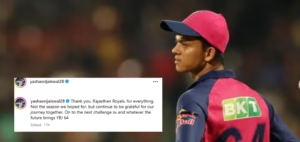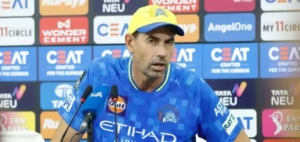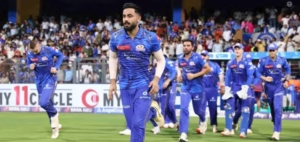Delhi Capitals Crash Out of IPL 2025: What Went Wrong for Hemang Badani’s Men?
By Swapneel Deshpande 22 May 2025, 13:51 IST


The Delhi Capitals’ promising start to the IPL 2025 season came to a disappointing end as they missed out on a playoff berth, with a crushing 59-run defeat to Mumbai Indians on May 21 sealing their fate. After winning four of their first five matches, DC’s campaign nosedived with five defeats in their last six completed games. Head coach Hemang Badani pointed to unsettled opening combinations, inconsistent finishes, and missed opportunities as key reasons behind their collapse.
Opening Woes Set the Tone
One of the Capitals’ biggest problems throughout the season was their revolving door of opening pairs. In total, they used seven different combinations, more than any other team, and their openers averaged just 19.23 runs per innings—the lowest in the league.
“Opening at the top was a worry for us,” admitted Badani after their defeat to MI. “A settled opening pair is only possible when they give you starts. Unfortunately, we didn’t get those.”
DC started the season with Faf du Plessis and Jake Fraser-McGurk, before trying various options including KL Rahul, Abishek Porel, and Karun Nair. This constant chopping and changing hurt the team’s rhythm and failed to provide the momentum needed in the powerplay overs.
Inconsistency and Shuffling in the Batting Order
The Capitals’ batting order resembled a game of musical chairs. KL Rahul was moved up and down the order, even requesting to open against Gujarat Titans—a decision that paid off with a sublime unbeaten 112. But this moment of brilliance was an exception rather than the norm.
Karun Nair, who made a stunning return to the IPL with a 40-ball 89 against MI in Delhi, struggled to replicate that performance. He managed only one score above 30 in the next six matches and was even tried as an opener in two games, with little success.
“The guys who’ve been around long enough, like KL and Faf, know their roles. We just help them with match-ups and planning. But they have to execute,” said Badani, underlining the lack of impact from senior players.
Bowling Meltdowns at Crucial Moments
DC’s bowlers generally delivered consistent performances but faltered during crunch situations. Against Mumbai, they conceded 48 runs in the final two overs—a period that decisively swung the game. Mukesh Kumar gave away 27 in the 19th over, while Dushmantha Chameera leaked 21 in the last.
“Until then, our bowling was spot on,” Badani said. “But our execution in the end didn’t meet expectations. Players like Suryakumar [Yadav] will punish you if you miss your lengths.”
This wasn’t an isolated incident. DC repeatedly allowed opponents back into games they should have closed out, showing a lack of game awareness and finishing skills.
Key Absences and Poor Team Balance
The absence of skipper Axar Patel in the final game due to flu disrupted the team’s balance. Without him, DC fielded only two wristspinners and had just one left-hander—Porel—in their top eight. Badani stressed that Axar’s left-arm spin and middle-order stability were sorely missed, especially on a sluggish pitch in Mumbai.
“A player like Axar would’ve made a massive difference, both with the ball and as a left-hand batter,” Badani lamented.
Missed Opportunities and Unfinished Games
The Capitals lost several matches from winning positions. Against Kolkata Knight Riders, they needed just 69 off 41 balls with seven wickets in hand, but failed to finish. Against MI at home, they were cruising before collapsing.
“We had games where we should have finished and didn’t. In a tournament like this, those small moments matter. If you don’t grab them, you can’t blame anyone but yourself,” Badani said candidly.
What Lies Ahead
With one game left—against Punjab Kings in Jaipur on May 24—DC’s season is effectively over in terms of playoff hopes. However, they still have a chance to end the campaign on a high and reflect on what needs to change for 2026.
Delhi’s season was a classic case of early momentum lost due to internal instability, tactical errors, and failure to seize key moments. While individual brilliance emerged sporadically, the team as a unit failed to deliver consistently when it mattered most.
If the Capitals want to be genuine title contenders in the future, they’ll need to fix their top-order uncertainties, define clearer roles, and—above all—learn how to close out games.
Stay updated with all the cricketing action, follow Cricadium on WhatsApp, Facebook, Twitter, Telegram, and Instagram
You might also like
Recommended to you












